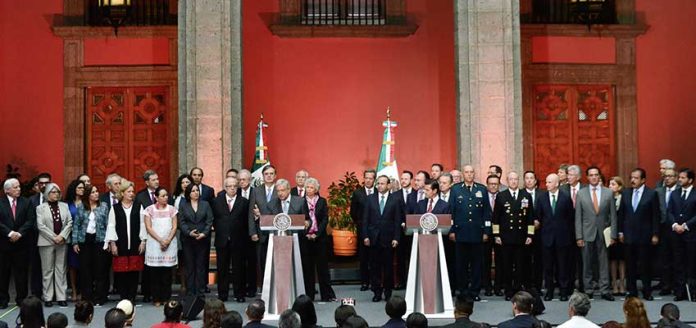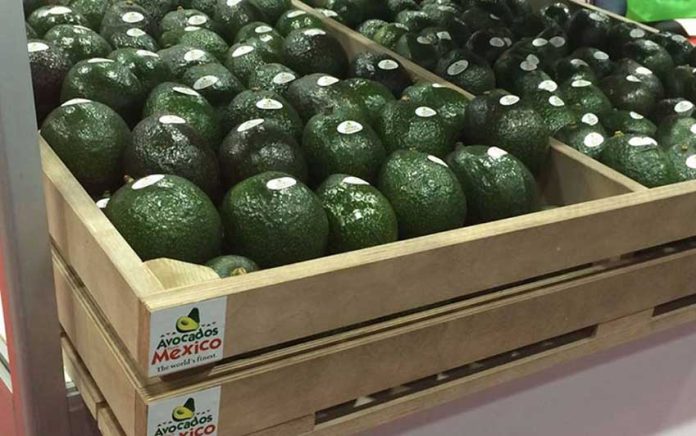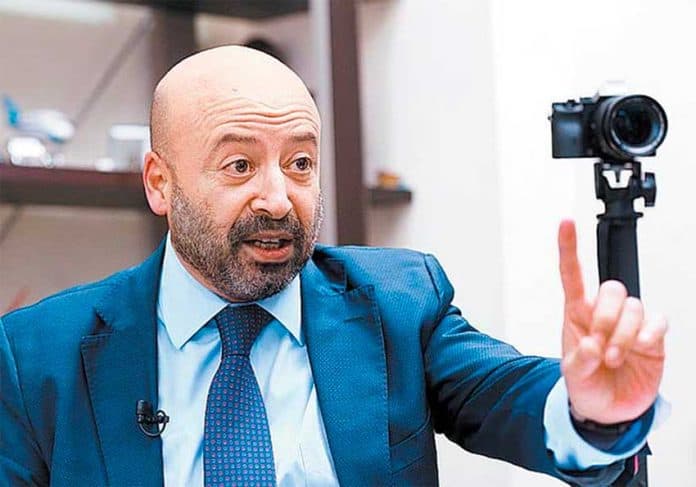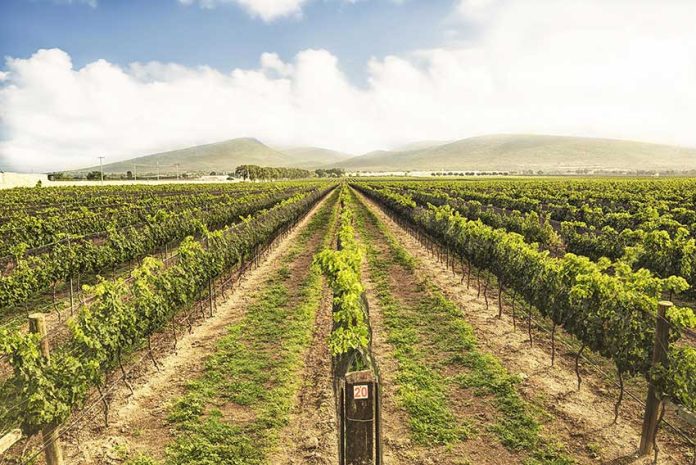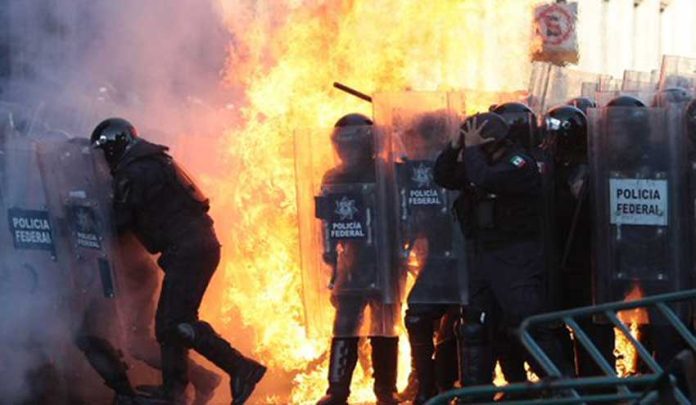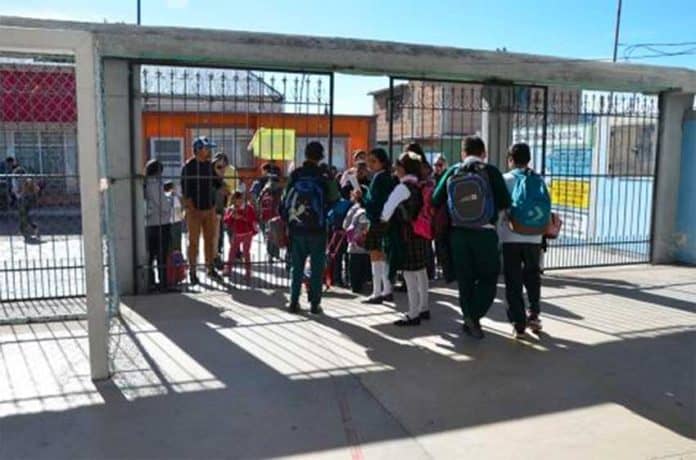“It takes fours weeks to finish a maguey bag,” said Pablo, an artisan from the highlands of Chiapas, speaking hesitantly into the voice recorder of a cellphone.
His village gets a cell signal once a month, so the idea of recording your voice into a device is rather unusual for him.
In a number of more isolated villages in the mountainous region of Chiapas a generations-old tradition of making beautiful bags from maguey fibers lives on. These small villages — the majority of residents speak Tzotzil and many have just a basic understanding of Spanish — are only about an hour or so from the highly visited, picturesque city of San Cristóbal de las Casas.
However, the lack of cellular signal and internet connection and ongoing land disputes means that these villages can feel rather cut off from the rest of the world. While most of the locals, like Pablo, are campesinos, farmworkers who harvest corn and pick coffee, or backstrap loom weavers like Pablo’s wife, there are still a few people in these villages who are making bags from maguey fiber.
The beautiful maguey plant is a symbol of Mexico for many. The provider of a number of the country’s most infamous beverages — tequila, mezcal and pulque — these plants are found in abundance across Mexico’s varied landscape. What is less known, though, is that maguey fiber has been used for centuries to make bags and clothing.
While it is not all that surprising that these abundant plants have been sourced for this purpose, it might be a surprise to find out how strong and durable maguey fiber is. Bags woven from this material can be incredibly robust and long-lasting.
The traditions of using fibers from cacti can be found across Mexico, notably in Yucatán, where the Spanish became extremely wealthy from the exploitation of agave — the scientific name for this variety of plant — to make henequen, often known as sisal. This fiber that was so strong it was used to make ropes and bags in a time when shipping and importing and exporting by sea was at its height.
Haciendas became rich and much of Mérida’s splendor was built from the mass production of henequen. It was an arduous process performed by local indigenous workers, the inequality of which would play a role in the Caste War that was fought across the region from 1847-1901.
In the highlands of Chiapas, the artisans now buy their maguey fiber from local markets, but it is very likely that previous generations would have extracted the fibrous insides of the maguey by themselves, and this extraction process still continues in other parts of Mexico.
Once the maguey is harvested, the fleshy leaves are placed on a piece of wood and a machete is run along them to remove the flesh and reveal the fiber, which is then washed with soap to remove any leftover slimy flesh and dried in the sun.
Lastly, it is run through the spikes of a round biznaga cactus to comb it out. This is an all-natural process that creates an off-white thread that is strong and durable.
Eustaquia, the granddaughter of 92-year-old Manuela, who has been making bags for 80 years, explained that “nowadays it is a little complicated to find maguey fiber.” However, it is unclear if the magueys themselves are less abundant or if a desire to work with cotton and nylon means that the fiber is in less demand.
Ehren Seeland works closely with the artisans, helping their products reach a wider market through her online store Hecho. To her, some of the more fine-weave maguey bags are worthy “museum pieces.” She sees them as a vital part of Mexico’s varied and rich textile tradition that may be obsolete soon since the younger generation has typically not embraced the art form of making bags.
Seeland, who works with artisans across Mexico, admired the bags after seeing them sold in stores in San Cristóbal and approached the artisans to discuss working together. They produce bags, for which she pays a fair price that takes into account the incredible craftsmanship, and she tries where possible to provide a regular extra income stream for these talented craftspeople.
The bags are made to size using a piece of wood with a screw on either end. The artisans roll the fiber on their leg to create the perfect thickness for the maguey thread and then weave the bag on the rustic frame. A permanent thread-shaped indent can be seen on 92-year-old Manuela’s legs, revealing the many thousands of bags she has made in her lifetime.
The fine-weave bags take a month to make, while the thicker ones take roughly a week and the pattern is so perfect that they look like they are woven using a machine. However, their hands make each loop with the generations of knowledge passed down to them. While the process takes a long time and is incredibly intricate, these craftspeople make it look easy.
Some bags are left in their natural color, which begins as a rather stark white and turns a beige tone in the sun. Other bags are placed on a specially made netting above the wood-fired stove and the smoke turns the bag a deep brown and leaves it with the evocative smell of bonfires.
Seeland has also been experimenting with dying some of the bags with a cochineal dye, which combines with the tone of the fiber to create an almost pastel pink hue.
The bags are finished with small loops on either side, where leather straps are attached. Manuela can make one medium-weave bag a month and recently 10 bags, or almost a year’s worth of work, were bought via Hecho to be sent to a customer in Japan.
Though it’s a tradition passed down through families — both Pablo and Manuela learned from their grandparents, the younger generations are understandably looking elsewhere for more lucrative income streams. When so much time is needed to make just one bag, and with artisan crafts being undervalued in relation to the time they take to produce, in the end the money they can make for a bag by selling to tourist stores is often not worth the time.
In addition, the winter months in the highland regions can be intensely cold. The frosty temperatures can mean it’s far too cold to weave these intricate bags, and many months of income are lost.
However, Seeland explained that the wood-smoked bags are especially popular and sell quickly. While she is clear that selling these bags is not going to dramatically change the lives of her artisan partners, her assurance of fair pay and respectful and ethical sourcing practices is clear, and these small collaborations ensure — for now, at least — that these ancient bags will continue to be made by two master craftspeople.
Susannah Rigg is a freelance writer and Mexico specialist based in Mexico City. Her work has been published by BBC Travel, Condé Nast Traveler, CNN Travel and The Independent UK among others. Find out more about Susannah on her website.

